Race cars predominantly use manual transmissions due to their precision and driver control, essential for competitive racing. Automatics are rare but appear in specific classes like drag racing.
1.1 Overview of Race Car Gearboxes
Race car gearboxes are specialized transmissions designed for high-performance racing. They are typically manual, offering precise control over gear shifts. These gearboxes are lightweight and durable, built to withstand the rigors of racing. They often feature advanced engineering, including sequential or H-pattern designs, to optimize speed and efficiency. The gear ratios are carefully calibrated to match the race track conditions, ensuring maximum acceleration and performance. Unlike road cars, race car gearboxes prioritize speed and driver input over comfort, making them integral to competitive racing success. Their design reflects the need for reliability, precision, and adaptability in high-stakes environments.
1.2 Importance of Transmission in Racing
The transmission is a critical component in racing, directly impacting performance and competitiveness. It ensures optimal power delivery from the engine to the wheels, enabling drivers to maintain speed and control. Manual transmissions dominate due to their precision and faster shift times, crucial for lap time reductions. Additionally, they provide drivers with direct control, allowing strategic decisions during races. The transmission’s reliability and durability are vital, as failures can lead to race-ending issues. Its role extends beyond mere gear shifting, influencing overall vehicle dynamics and driver confidence, making it a cornerstone of racing strategy and success in competitive motorsports environments.

History of Manual Transmissions in Racing
Manual transmissions have been integral to racing since the early 20th century, offering durability and driver control, essential for competitive performance and strategic gear shifting.
2.1 Early Racing Cars and Manual Gearboxes
The earliest racing cars relied on manual gearboxes due to their simplicity and reliability. These systems allowed drivers to maintain control, crucial in the era of rudimentary automotive technology. The lack of automatic transmissions in early motorsports necessitated manual shifting, which became a defining skill for drivers. As racing evolved, so did the manual gearbox, with innovations like multiple gears and improved materials enhancing performance. This laid the foundation for modern racing, where manual transmissions remain predominant.
2.2 The Role of Driver Control in Manual Transmissions
Driver control is paramount in manual transmissions, enabling precise gear shifts that optimize speed and traction. Unlike automatics, manuals require active engagement, allowing drivers to adapt instantly to racing conditions. This hands-on approach ensures better acceleration and deceleration, critical in competitive environments. The clutch and gearstick become extensions of the driver, fostering a deeper connection with the vehicle. Enhanced control contributes to faster lap times and superior handling, making manual transmissions the preferred choice for professional racers seeking every possible performance advantage.
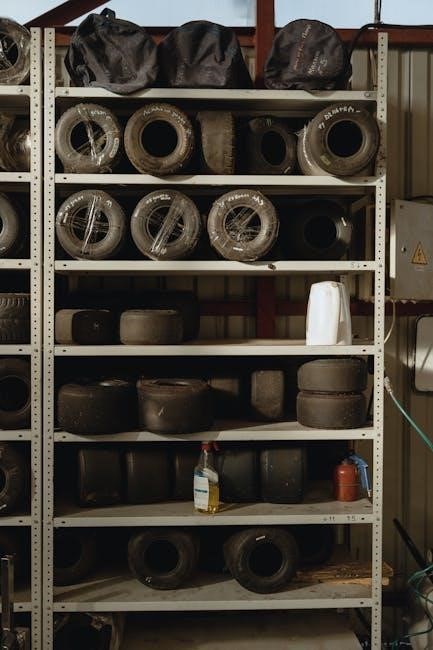
Evolution of Transmissions in Racing
Racing transmissions have evolved significantly, from early manual systems to advanced sequential gearboxes. Modern designs emphasize speed, reliability, and driver precision, shaping the sport’s competitive landscape.
3.1 Early Racing Transmissions
Early racing transmissions were simple, non-synchronized manual systems, requiring drivers to master the art of shifting without sync rings. These systems, while rudimentary, laid the foundation for modern advancements. They emphasized driver skill and mechanical reliability, as automatic transmissions were not yet prevalent in the sport. The focus was on durability and efficiency, with gears designed to withstand the stresses of competitive racing. These early transmissions were often heavy and less refined, but they played a crucial role in the development of racing technology.
3.2 The Rise of Manual Gearboxes
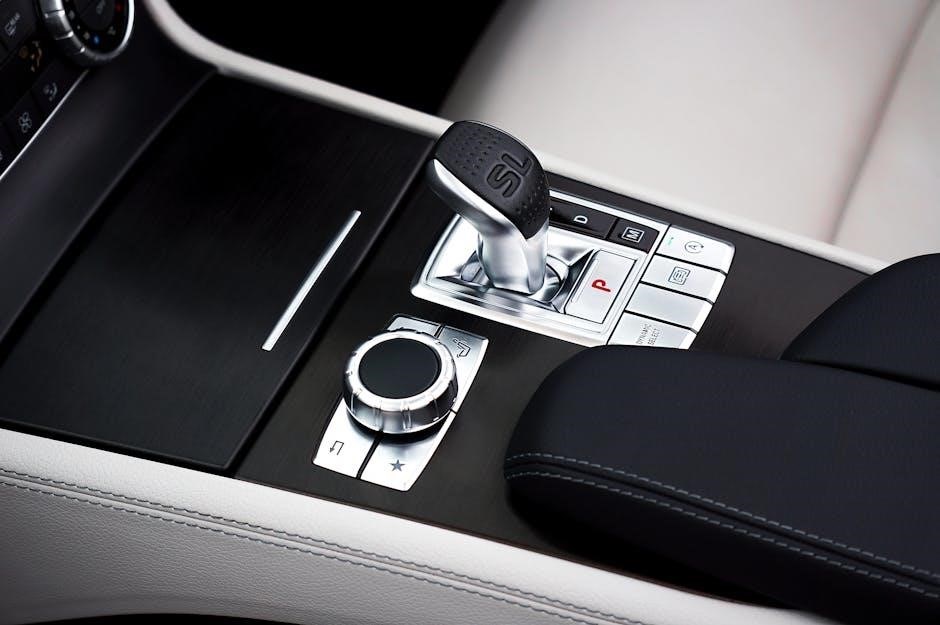
Manual gearboxes became prominent in racing during the mid-20th century, offering greater control and precision for drivers. Unlike early non-synchronized systems, these gearboxes featured improved designs, allowing faster and smoother shifts. The ability to manually select gears enabled drivers to optimize acceleration and maintain momentum through corners, crucial for competitive racing. This shift marked a turning point, as manual transmissions became the standard due to their performance advantages. The rise of manual gearboxes also highlighted the importance of driver skill, as mastering the clutch and gear changes became essential for success on the track.
3.3 Transition to Modern Manual Systems
The transition to modern manual systems in racing involved significant advancements in design and technology. Modern manual gearboxes are built with lightweight materials like carbon fiber and advanced alloys, reducing weight while maintaining strength. Close-ratio gearing became standard, allowing precise control and optimal acceleration. Electronic aids, such as semi-automatic and paddle-shift systems, were integrated to enhance driver control. Modern manual transmissions also feature improved lubrication systems, reducing wear and tear. These advancements have made manual systems more efficient and reliable, solidifying their dominance in racing. The focus on driver engagement and performance has ensured manual transmissions remain the preferred choice for most racing applications.
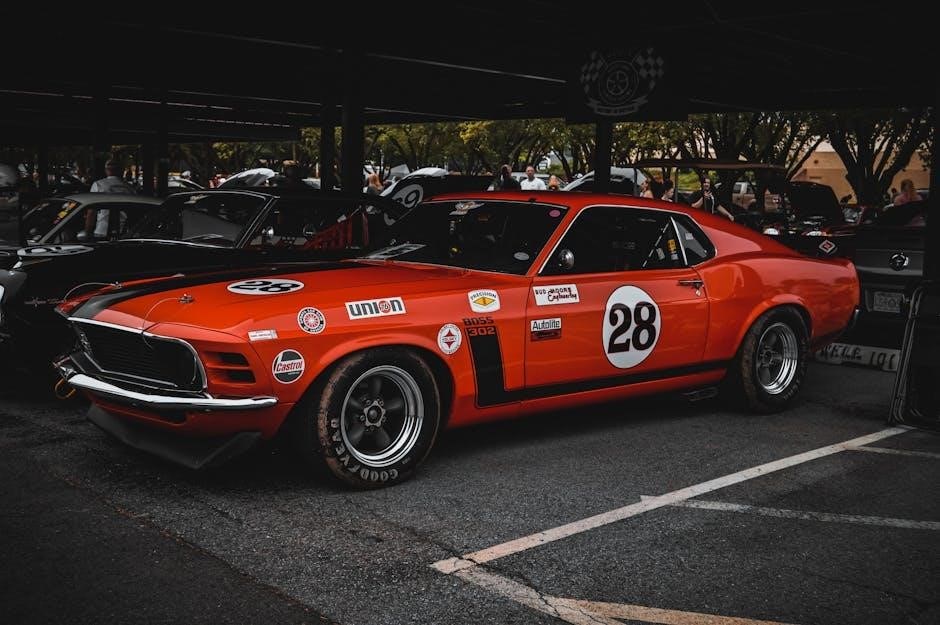
Types of Manual Transmissions in Racing
Manual transmissions in racing include sequential, H-pattern, and semi-automatic systems, each designed for specific performance needs, emphasizing efficiency, driver control, and speed consistency.
4.1 Sequential Manual Gearboxes
Sequential manual gearboxes are widely used in racing due to their efficiency and precision. Unlike traditional H-pattern gearboxes, sequential systems feature gears arranged in a straight line, allowing drivers to shift sequentially without moving the gear lever through a gate. This design enables faster gear changes, as the driver only needs to push or pull the lever to engage the next or previous gear. Sequential gearboxes are often paired with paddle-shift systems, combining manual control with semi-automatic functionality. They are particularly popular in open-wheel and endurance racing, where rapid, precise shifting is critical for maintaining speed and control on the track.
4.2 H-Pattern Manual Gearboxes
H-Pattern manual gearboxes are a traditional choice in racing, offering simplicity and reliability. The gearshift operates in an ‘H’ configuration, requiring the driver to move the lever through a specific gate to select gears. This design provides a direct connection between the driver and the transmission, allowing for precise control. H-Pattern gearboxes are often preferred in endurance and vintage racing, where their durability and ease of maintenance are advantageous. They also suit drivers who value the tactile feedback of a manual shift. While less common in top-tier series compared to sequential systems, H-Pattern gearboxes remain popular for their mechanical simplicity and driver engagement.
4.3 Semi-Automatic and Paddle-Shift Systems
Semi-automatic and paddle-shift systems combine elements of manual and automatic transmissions, offering a blend of driver control and convenience. These systems use electronic actuators to engage gears, eliminating the need for a clutch pedal. Paddle-shift systems, mounted on the steering wheel, allow drivers to change gears seamlessly while keeping their hands on the wheel. This setup is common in modern racing series, such as Formula 1, where precision and speed are critical. Semi-automatic systems are also popular in endurance racing, as they reduce driver fatigue during long stints. Their hybrid nature makes them ideal for balancing performance and usability in competitive environments.

Why Manual Transmissions Are Preferred in Racing
Manual transmissions are favored in racing for their precision, control, and mechanical advantage, allowing drivers to optimize acceleration and gear shifts, enhancing overall performance and competitiveness.
5.1 Driver Control and Precision
In racing, manual transmissions provide unparalleled driver control and precision. Drivers can manually select gears, allowing for exact torque delivery and optimal acceleration. This direct connection enables precise throttle and gear coordination, crucial for competitive racing. The ability to pre-select gears before corners or overtakes enhances strategy and responsiveness. Manual transmissions demand active driver involvement, fostering a deeper connection with the car. This hands-on control is vital in high-stakes environments, where split-second decisions can determine race outcomes. The mechanical simplicity of manual systems also reduces latency, ensuring instantaneous gear changes that automatics often can’t match. This level of control is why manual transmissions dominate racing.
5.2 The Role of the Clutch in Racing
The clutch plays a critical role in manual racing transmissions, enabling drivers to disconnect engine power during gear shifts. This allows seamless transitions between gears without damaging the transmission. In racing, the clutch is typically used sparingly, primarily for starting from a standstill or during overtakes; Drivers must precisely coordinate the clutch pedal with the accelerator to avoid wheelspin or loss of traction. The clutch’s responsiveness is tuned for quick shifts, enhancing acceleration and control. Its operation requires skill and timing, making it a key element in a driver’s ability to extract maximum performance from the car. This precision is vital in competitive racing environments.
5.3 Weight Advantage of Manual Systems
Manual transmissions in race cars offer a significant weight advantage compared to automatic systems. This is because manual gearboxes are mechanically simpler, with fewer components like torque converters and planetary gearsets. The reduced weight improves the car’s power-to-weight ratio, enhancing acceleration and handling. In racing, where every kilogram matters, this weight savings can lead to better lap times and overall performance. Additionally, the lighter manual system reduces the car’s rotational mass, improving responsiveness and fuel efficiency. This weight benefit is a key reason why manual transmissions remain the preferred choice in most racing categories, despite advancements in automatic technologies.
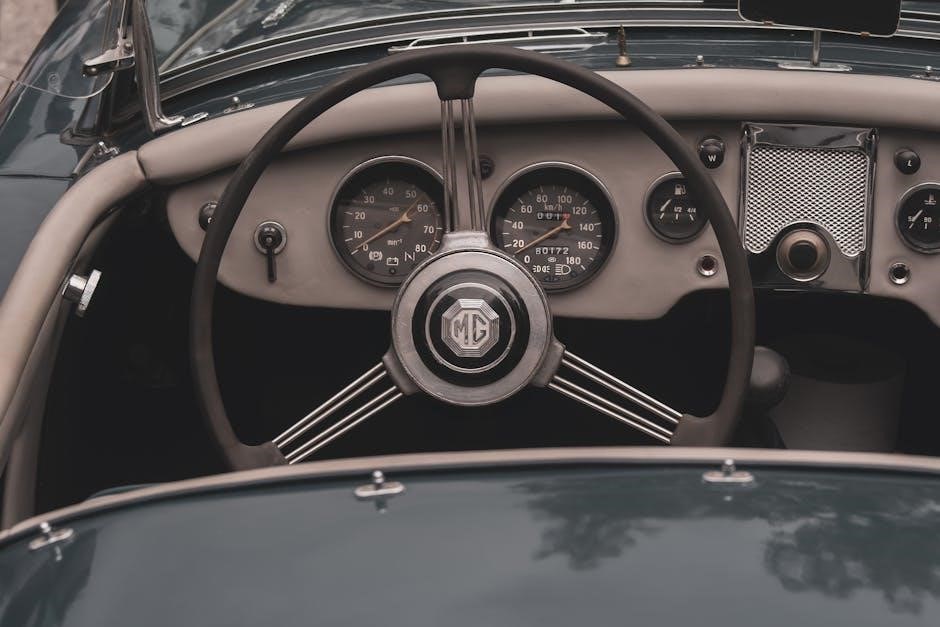
Exceptions: Automatic Transmissions in Racing
Automatic transmissions are used in specific racing classes, such as drag racing and production car racing, where simplicity and ease of use provide speed consistency, making them exceptions in the motorsport world.
6.1 Use of Automatic Transmissions in Production Car Racing
In production car racing, automatic transmissions are often permitted to align with the specifications of road-going vehicles. These transmissions are favored for their ease of use, reducing driver workload and allowing focus on handling. Automatics provide consistent acceleration, which can be advantageous on certain circuits. However, they are generally less common in higher-tier racing due to weight and efficiency disadvantages compared to manual systems. Despite this, automatic transmissions remain popular in production-based classes, offering a balance between performance and accessibility for drivers. Their use ensures a closer connection to the production vehicles they represent, making races more relatable for fans.
6.2 Automatic Transmissions in Drag Racing
Automatic transmissions are widely used in drag racing due to their ability to deliver quick, consistent launches and smooth power delivery. Unlike manual systems, automatics eliminate the need for manual shifting, allowing drivers to focus solely on acceleration. Torque converters in automatic transmissions help multiply torque at launch, providing a significant advantage off the line. This makes them particularly effective in classes where rapid acceleration is critical. However, they are often heavily modified to optimize performance for drag racing conditions. Despite their popularity in drag racing, automatics remain less common in other forms of motorsport due to weight and efficiency drawbacks. They thrive in this specific environment.
6.3 Historic Racing Classes with Automatics
Historic racing classes have occasionally featured automatic transmissions, particularly in series emphasizing originality over performance. In the 1960s and 1970s, some stock car racing series allowed automatic transmissions to remain true to production specifications. NASCAR, for example, permitted automatics in certain eras, as they reflected the cars’ street-legal counterparts. These transmissions were often heavy and less efficient but provided simplicity, allowing drivers to focus on handling and braking. While automatics in historic racing are rare today, they remain a nostalgic nod to the era when production authenticity was prioritized. This practice highlights the balance between performance and historical accuracy in motorsport.
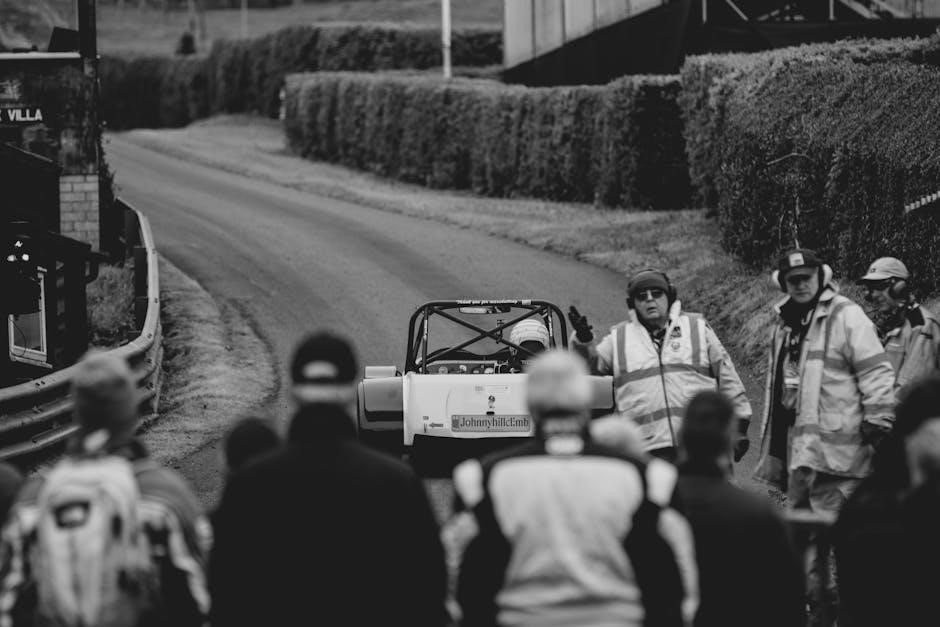
Technical Aspects of Racing Transmissions
Racing transmissions combine lightweight materials and precise engineering to optimize performance. High-strength gears and advanced clutch systems ensure durability and reliability under extreme racing conditions.
7.1 Engineering Behind Race Car Transmissions
Race car transmissions are meticulously engineered for high performance and durability. They utilize lightweight materials like carbon fiber and aluminum to minimize weight while maintaining strength. High-strength steel alloys are used for gears to withstand immense stress. The gearbox design focuses on precision shifting, with features like close-ratio gearing to optimize acceleration. Advanced lubrication systems ensure thermal stability, preventing overheating during intense races. Engineers also prioritize compact designs to improve weight distribution and aerodynamics. These transmissions are custom-tuned for specific racing conditions, ensuring maximum power delivery and driver control, making them integral to a race car’s success.
7.2 The Role of the Clutch in Manual Transmissions
The clutch plays a critical role in manual transmissions, acting as the interface between the engine and gearbox. It allows drivers to disengage the engine from the transmission, enabling smooth gear shifts without causing damage. In racing, the clutch is often a single-plate design for lighter weight and faster engagement. Drivers use it strategically during race starts and high-speed shifts to maintain control and maximize acceleration. The clutch’s precision engineering ensures minimal wear and tear, even under extreme conditions. Its responsiveness is vital for competitive racing, where every fraction of a second counts. Proper clutch management is a key skill for drivers to master.
7.3 Gear Ratios and Their Importance
Gear ratios are fundamental to a race car’s performance, determining how power is delivered to the wheels. They define the relationship between engine RPM and wheel speed, with lower ratios offering higher torque for acceleration and higher ratios enabling greater top speed. Teams carefully select gear ratios based on track characteristics, balancing acceleration and speed. Proper gearing optimizes engine performance, keeping it within the power band. This directly impacts lap times and competitiveness. Adjusting gear ratios is a strategic tool in racing, allowing teams to tailor their car’s behavior to specific circuits. The right ratios can transform a car’s responsiveness and overall race performance.
Manual vs. Automatic: Performance Comparison
Manual transmissions are preferred for precision and control, offering quicker shifts and better driver connection. Automatics, while faster in specific scenarios like drag racing, often lack the driver engagement of manuals.
8.1 Acceleration and Speed
Manual transmissions are often favored in racing for their superior acceleration and speed. Drivers can optimize gear shifts to maximize power delivery, especially in competitive environments where milliseconds matter. Automatic transmissions, while improving with advancements like dual-clutch systems, historically lag behind in driver control and precision. However, modern automatics, particularly in drag racing, can deliver faster 0-60 mph times due to instantaneous torque delivery without manual shifting. Despite this, manual gearboxes remain the preferred choice for most racing classes, as they offer mechanical efficiency and a direct connection to the car’s performance, critical for achieving peak acceleration and speed.
8.2 Fuel Efficiency
Fuel efficiency is less critical in racing compared to acceleration and speed, as races prioritize performance over economy. However, manual transmissions are generally more fuel-efficient due to their mechanical simplicity and direct driver control. Automatic transmissions, especially older models, often consume more fuel because of the torque converter and less precise shifting. Modern automatics, like dual-clutch systems, have narrowed this gap but still lag behind manuals in fuel economy. In endurance racing, where fuel strategy matters, manual gearboxes are preferred for their efficiency. Despite this, fuel efficiency remains a secondary concern in most racing contexts, where speed and power take precedence.
8.3 Driver Fatigue and Concentration
Driver fatigue and concentration are crucial factors in racing, where mental and physical demands are extreme. Manual transmissions require constant engagement with the clutch and gearshift, which can increase driver fatigue over long races. However, this active involvement may also enhance concentration by keeping the driver fully connected with the car. Automatic transmissions reduce the physical effort needed for shifting, potentially lowering fatigue, but they may diminish the driver’s active engagement, which could affect concentration. The choice between manual and automatic transmissions often balances these aspects, depending on the race type and driver preference.

Manual vs. Automatic: Reliability and Maintenance
Manual transmissions are typically more reliable and require less maintenance than automatics, as they have fewer complex components. Automatics, however, need more specialized care, increasing costs.
9.1 Durability of Manual Transmissions
Manual transmissions are renowned for their durability in racing environments. Their simplistic design, with fewer components compared to automatics, reduces the likelihood of mechanical failure. High-strength materials and precise engineering ensure they withstand the extreme forces of racing. The absence of complex systems like torque converters enhances reliability. Regular maintenance is essential but less intensive, contributing to their longevity. This robustness makes manual transmissions a preferred choice in racing, where reliability is paramount to performance and reducing costly downtime. Their durability ensures consistent performance, making them a cornerstone in competitive racing scenarios. This reliability is a key factor in their widespread adoption across various racing disciplines.
9.2 Maintenance Requirements
Manual transmissions in race cars require regular maintenance to ensure optimal performance. Routine tasks include fluid changes, clutch inspections, and gear lubrication. These procedures are relatively straightforward compared to automatic transmissions, which have more complex components. Despite their simplicity, manual transmissions demand precise adjustments to maintain synchronization and smooth shifting. The frequency of maintenance often depends on usage, with racing applications necessitating more frequent checks due to the intense stress placed on the system. While manual transmissions are less maintenance-intensive overall, their upkeep still requires attention to detail to prevent wear and tear, ensuring reliability during high-performance racing conditions.
9.3 Cost Implications
Manual transmissions in race cars are generally more cost-effective than automatics, both in terms of purchase and maintenance. The simplicity of manual systems reduces production costs and lowers the expense of replacing parts. However, high-performance manual transmissions, such as those used in professional racing, can be costly due to specialized engineering and materials. Despite this, their durability and lower maintenance requirements often make them a more economical choice in the long run. Automatic transmissions, while initially more expensive, may offer cost benefits in specific racing scenarios, but manual systems remain the preferred option for most racing applications due to their overall cost efficiency.
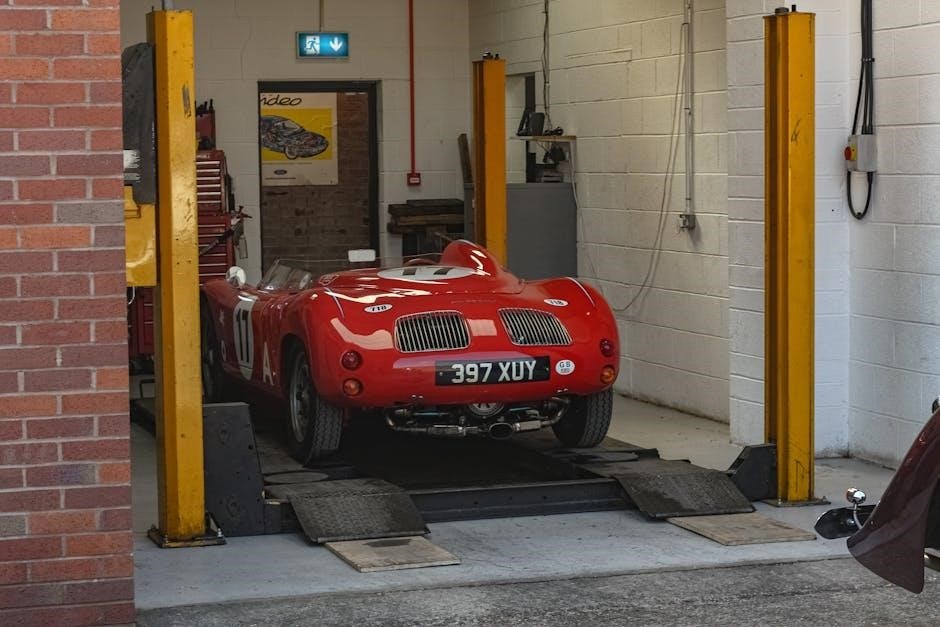
The Future of Transmissions in Racing
The future of race car transmissions leans toward advanced manual systems, with innovations in semi-automatic and dual-clutch technologies. Automatic transmissions may gain traction in specific categories, but manuals remain dominant due to their precision and driver engagement, which are critical in competitive racing environments.
10.1 Advances in Manual Transmission Technology
Advances in manual transmission technology are revolutionizing racing, with lightweight materials like carbon fiber reducing weight while maintaining strength. Innovations in gear coatings and lubrication minimize friction and wear, enhancing durability. Electronic systems now prevent missed shifts by optimizing gear engagement, and integrated engine management ensures seamless power delivery. These advancements maintain the precision and control drivers demand, keeping manual transmissions at the forefront of racing despite the rise of automatics in certain categories. Such innovations ensure manuals remain competitive, blending tradition with cutting-edge technology to meet the evolving demands of high-performance racing.
10.2 Rise of Semi-Automatic and Dual-Clutch Systems
The rise of semi-automatic and dual-clutch systems in racing marks a shift toward hybrid transmission technology. These systems combine the precision of manual gearboxes with the convenience of automatic shifting, offering faster gear changes and reduced driver fatigue. Dual-clutch systems, in particular, use two clutches to pre-select gears, enabling instantaneous shifts without interrupting power delivery. This technology is increasingly favored in endurance racing, where consistent performance over long periods is critical. Semi-automatic systems also integrate seamlessly with electronic controls, optimizing engine performance and reducing the likelihood of errors. As racing evolves, these systems bridge the gap between traditional manuals and fully automatic transmissions.
10.3 Potential Shift Towards Fully Automatic Transmissions
The racing world is witnessing a potential shift toward fully automatic transmissions, driven by advancements in technology and the demand for efficiency. Modern automatic systems, equipped with advanced torque converters and smart algorithms, can now deliver faster and more precise shifts than ever before. These systems reduce driver fatigue and allow focus on steering and braking, particularly in endurance races. While manual transmissions remain dominant, automatics are gaining traction in certain racing classes. The debate surrounding automatics highlights their potential to enhance performance while maintaining reliability. As technology progresses, fully automatic transmissions may become a viable option for competitive racing, challenging the traditional dominance of manuals.
Race cars predominantly use manual transmissions for precision and control, yet automatics are gaining traction with technological advancements, offering a promising future in competitive racing scenarios.
11.1 Summary of Key Points
11.2 Final Thoughts on Manual vs. Automatic in Racing
In racing, manual transmissions dominate due to their precision and performance advantages, offering drivers direct control over gear shifts, which is crucial for optimizing speed and handling. The physical engagement of manual systems aligns with the competitive nature of racing, where every millisecond counts. While automatic transmissions are utilized in specific niches like drag racing for explosive acceleration, the majority of high-performance racing relies on advanced manual or semi-automatic systems. As technology progresses, hybrid and dual-clutch systems are emerging, potentially redefining transmission dynamics. However, the essence of racing—driver skill and mechanical synergy—remains deeply intertwined with manual transmissions, ensuring their prevalence in the sport’s future.



